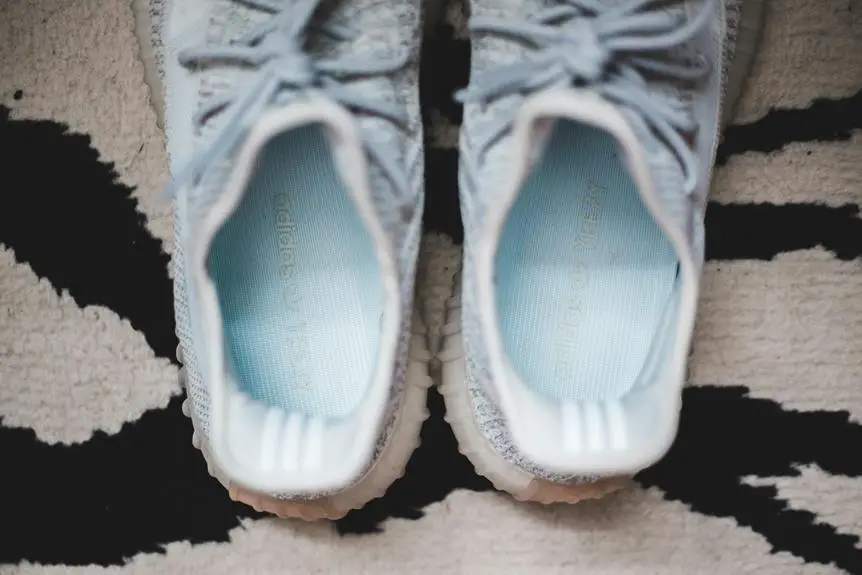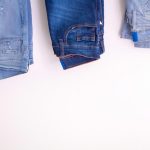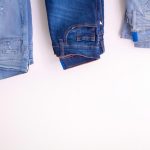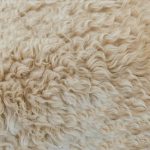You're likely familiar with French Terry as a soft, plush fabric commonly used in casual wear. But can it keep up with the demands of sportswear? As you consider this question, think about the key features that make a fabric suitable for high-intensity activities: breathability, moisture-wicking properties, and a full range of motion. French Terry seems to tick these boxes, but how does it stack up against technical fabrics specifically designed for sportswear? As you weigh the pros and cons, you might be surprised by the potential of French Terry to meet the needs of athletes – but can it really deliver?
Table of Contents
Benefits of French Terry Fabric
French Terry fabric offers several benefits that make it an ideal choice for sportswear, including its exceptional softness, breathability, and moisture-wicking properties.
When you choose French Terry for your sportswear, you'll appreciate how it gently hugs your skin, providing a comfortable fit that doesn't chafe or irritate. The fabric's breathability allows for airflow, which helps regulate body temperature, keeping you cool in the summer and warm in the winter.
Another benefit of French Terry is its versatility. It can be used to create a wide range of sportswear items, from casual wear like hoodies and sweatpants to more technical garments like running shorts and yoga tops.
Additionally, French Terry is a great choice for sportswear because it's easy to care for. It can be machine washed and dried, making it a practical choice for athletes who need to wash their gear frequently.
Performance Features of Sportswear
When you're designing sportswear, you need fabrics that can keep up with your customers' active lifestyles. You're looking for performance features that will enhance their workout experience, and French Terry fabric delivers.
Let's explore how its breathability, four-way stretch, and quick-drying properties make it an ideal choice for sportswear.
Breathability and Moisture Management
One key performance feature of sportswear is breathability, which allows for efficient moisture management, helping to keep athletes cool and dry during intense physical activity. You might be wondering if French Terry can deliver on this front. When it comes to breathability, you want a fabric that allows moisture to escape quickly, preventing the buildup of sweat.
- Long-distance running: You're pounding the pavement, and your clothes are getting drenched in sweat. A breathable fabric will help keep you dry and comfortable.
- High-intensity interval training: You're pushing yourself to the limit, and your heart rate is soaring. A breathable fabric will help regulate your body temperature.
- Team sports: You're playing a fast-paced game of soccer or basketball, and you need to stay cool and dry to perform at your best. A breathable fabric will help you stay focused on the game.
- Yoga or Pilates: You're moving through a series of challenging poses, and you need a fabric that will keep up with your movements. A breathable fabric will help you stay comfortable and focused.
When it comes to French Terry, its breathability is a major selling point. But how does it stack up against other sportswear fabrics?
Four-Way Stretch Capability
As athletes demand more from their sportswear, four-way stretch capability has become a crucial performance feature, allowing for a full range of motion without restriction. You need to be able to move freely and comfortably, whether you're running, jumping, or stretching.
French terry fabric, with its looped piles on both sides, can provide this four-way stretch capability. The loops allow for flexibility in all directions, giving you the range of motion you need to perform at your best.
When you're wearing sportswear made from French terry, you'll notice that it moves with you, not against you. The fabric stretches horizontally and vertically, allowing for a full range of motion. This means you can focus on your game, not on restrictive clothing.
Additionally, the four-way stretch capability of French terry helps reduce chafing and irritation, making it a great choice for athletes who engage in high-intensity activities. By choosing sportswear made from French terry, you can enjoy a more comfortable and effective workout.
Quick Drying Properties
You'll appreciate the quick-drying properties of French terry fabric, which can wick away moisture and dry rapidly, keeping you cool and dry during intense physical activities.
This feature is especially important for sportswear, as it helps prevent chafing and discomfort caused by wet clothing. French terry's quick-drying properties make it an excellent choice for activewear, such as running shorts, yoga pants, and sports jerseys.
- Sweaty gym sessions: You're in the middle of a high-intensity workout, and your clothes are getting soaked with sweat. French terry fabric helps draw moisture away from your skin, keeping you dry and comfortable.
- Marathon running: You're running a long distance, and the sun is beating down on you. French terry's quick-drying properties help keep you cool and dry, reducing the risk of chafing and discomfort.
- Water sports: You're engaging in water activities like kayaking or paddleboarding. French terry's quick-drying properties help your clothes dry rapidly, keeping you warm and comfortable.
- Hiking in humid weather: You're hiking in a humid environment, and your clothes are getting wet from sweat and rain. French terry fabric helps wick away moisture, keeping you dry and comfortable.
French Terry Vs Technical Fabrics
When it comes to sportswear, technical fabrics like polyester and nylon often get top billing, but French terry can hold its own in many areas, making it a viable alternative for certain applications. You might be wondering how French terry stacks up against these technical fabrics. Let's take a closer look.
| Fabric Property | French Terry | Technical Fabrics |
|---|---|---|
| Breathability | Good | Excellent |
| Durability | Good | Excellent |
| Stretch | Moderate | High |
| Softness | High | Low-Moderate |
| Sustainability | High | Low-Moderate |
As you can see, French terry has its strengths and weaknesses compared to technical fabrics. While it may not be as breathable or durable as polyester or nylon, it excels in terms of softness and sustainability. This makes it a great choice for sportswear that prioritizes comfort and eco-friendliness, such as yoga pants or casual jogging shorts. Additionally, French terry can be blended with other fibers to enhance its performance. By understanding the trade-offs between French terry and technical fabrics, you can make informed decisions about which fabric to use for your sportswear needs.
Moisture Management in French Terry
French terry's ability to manage moisture effectively is crucial for sportswear applications, and its performance in this area is influenced by several factors, including its fiber content, weave, and finishing treatments. As you consider using French terry for sportswear, you'll want to think about how it will handle sweat and moisture.
French terry can be a great choice for moisture management if you're looking for a fabric that can wick away moisture quickly.
- Fiber content: French terry made from synthetic fibers like polyester or nylon can wick away moisture quickly. Cotton or cotton-blend French terry may take a bit longer to dry.
- Weave: A tighter weave can help prevent moisture from penetrating the fabric. A looser weave can allow for better airflow and moisture transfer.
- Finishing treatments: Some French terry fabrics may undergo special finishing treatments, such as water-repellent coatings or moisture-wicking treatments, to enhance their moisture management capabilities.
- Weight and thickness: Lighter-weight French terry fabrics tend to dry faster than heavier-weight fabrics, making them a great choice for high-intensity activities.
Breathability and Thermal Regulation
In addition to its moisture management capabilities, French terry's breathability and thermal regulation properties make it an excellent choice for sportswear, allowing it to keep you cool and dry during physical activity.
As you engage in intense exercise, your body temperature rises, and you start to sweat. French terry's breathability helps to regulate this temperature by allowing air to circulate through the fabric, keeping you cooler and more comfortable.
This is especially important for high-intensity activities like running or cycling, where overheating can lead to decreased performance.
The fabric's thermal regulation properties also help to prevent overheating by allowing excess heat to escape. This is achieved through the unique looped pile construction of French terry, which creates a layer of air between the fabric and your skin.
This air layer acts as insulation, keeping you warm in cold temperatures and cool in hot temperatures. As a result, you can focus on your performance without distraction from discomfort or overheating.
Potential Applications in Sportswear
When designing sportswear, you'll want to consider the various applications where French Terry can shine.
You'll have the opportunity to explore a range of performance wear options, from tops and bottoms to outerwear and accessories.
Performance Wear Options
You'll find numerous performance wear options where French terry fabric can make a significant impact, particularly in garments that require moisture-wicking properties, breathability, and comfort. As you consider using French terry for sportswear, think about the types of activities that involve repetitive motion, sweating, and friction. French terry's unique properties make it an excellent choice for garments that need to keep up with athletes who demand high performance.
1. Hiking and running tops: French terry's moisture-wicking properties and breathability make it an excellent choice for tops that need to keep athletes cool and dry during intense physical activity.
2. Yoga and Pilates pants: The comfort and flexibility of French terry fabric make it perfect for pants that need to move with athletes during stretching and bending exercises.
3. Cycling jerseys: French terry's breathability and moisture-wicking properties help keep cyclists cool and dry during long rides.
4. Golf shirts: The comfort and breathability of French terry fabric make it an excellent choice for golf shirts that need to keep golfers cool and dry during long games.
Active Wear Designs
French terry fabric's versatility and performance capabilities make it an ideal material for creating active wear designs that cater to various sportswear needs, from functional details to stylish accents. As you consider using French terry for your sportswear line, think about the types of activities your customers will be engaging in. Will they be running, training, or participating in team sports? French terry's flexibility and durability make it suitable for a wide range of applications.
When designing active wear with French terry, consider the following features and benefits:
| Feature | Benefit | Example |
|---|---|---|
| Four-way stretch | Allows for a full range of motion | Yoga pants or leggings |
| Soft brushed interior | Provides comfort against the skin | Long-sleeved tops or sweatshirts |
| Quick recovery | Resists wrinkles and retains shape | Travel or performance wear |
| Breathable construction | Regulates body temperature | Running shorts or tank tops |
| Stylish texture | Adds visual interest to designs | Fashion-forward sportswear or athleisure wear |
Moisture Management Features
Considering the types of activities your customers will be engaging in, it's likely that moisture management will be a key concern in your sportswear designs. French terry can be a great choice for sportswear, but you'll need to consider how it will perform in terms of moisture management.
When it comes to moisture management, you'll want to think about how your fabric will handle sweat and dry quickly to keep your customers comfortable.
- Breathability: French terry's looped piles allow for airflow and moisture transfer, making it a breathable fabric option.
- Moisture-wicking treatments: You can treat French terry with moisture-wicking technologies to enhance its ability to draw sweat away from the skin.
- Blend with technical fibers: Blending French terry with technical fibers like polyester or nylon can improve its moisture management capabilities.
- Design features: Strategically placing mesh panels or ventilation zones in your design can also enhance moisture management.
Frequently Asked Questions
Can French Terry Be Used for Outdoor Activities?
You're considering French Terry for outdoor activities, but aren't sure if it's up to the task. You'll be happy to know that its absorbency, breathability, and softness make it perfect for casual outdoor pursuits like hiking or camping.
Is French Terry Suitable for High-Intensity Workouts?
When considering high-intensity workouts, you'll want to choose a fabric that breathes and wicks moisture well. French terry, with its soft loops and smooth surface, might not be the best choice for you, as it can retain sweat.
Can French Terry Be Paired With Technical Fabrics?
You can pair French terry with technical fabrics for a performance-driven outfit. You'll benefit from the breathability and moisture-wicking properties of technical fabrics, while French terry adds comfort and style to your ensemble naturally.
Does French Terry Retain Its Shape After Washing?
You'll be happy to know that French terry generally retains its shape well after washing, but it's not entirely resistant to shrinkage. You can minimize shrinkage by washing it in cold water and avoiding high heat drying.
Is French Terry Fabric Prone to Pilling?
When you look at French terry fabric, you'll notice it can be prone to pilling, especially if it's made from a lower-quality cotton blend. However, you can reduce pilling by washing it inside out and avoiding over-drying.
- How Does Ring Spun Cotton Affect Garment Fit and Shape Retention? - August 13, 2024
- What Are the Challenges in Producing Ring Spun Cotton? - August 13, 2024
- Is Ring Spun Cotton Suitable for Plus-Size Clothing? - August 13, 2024







